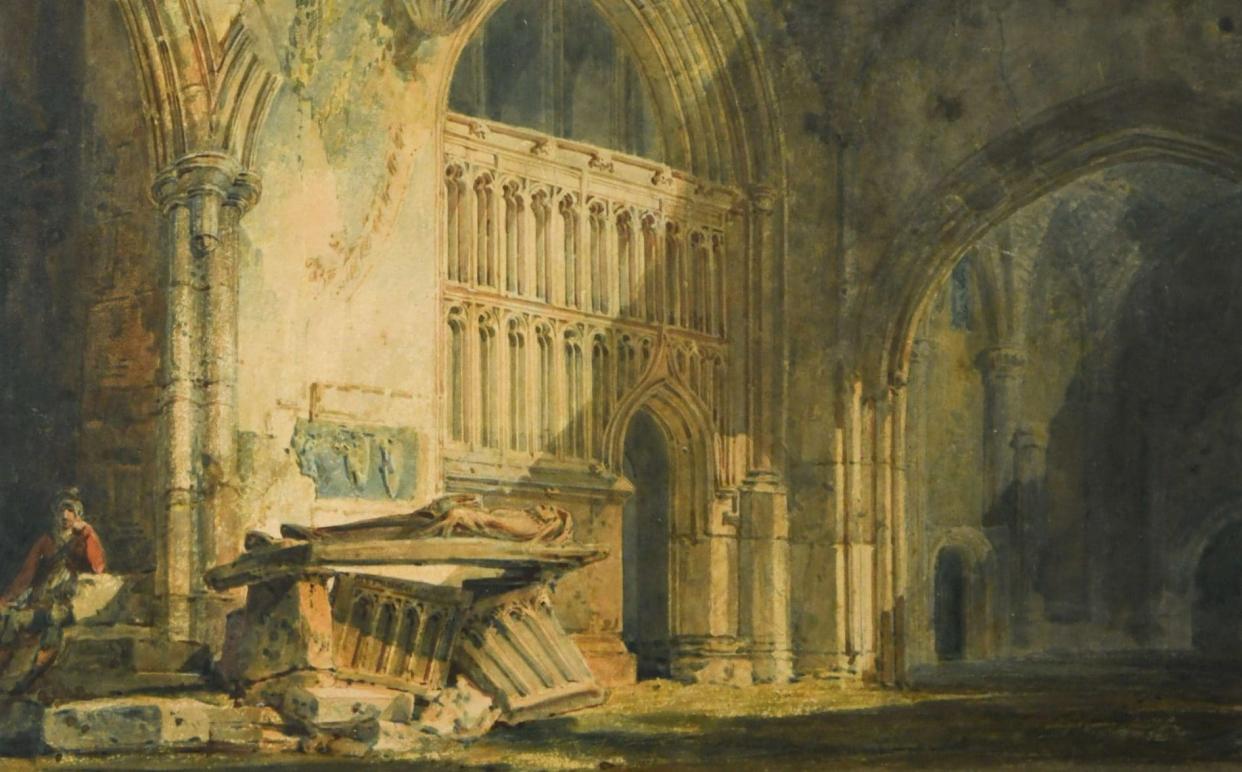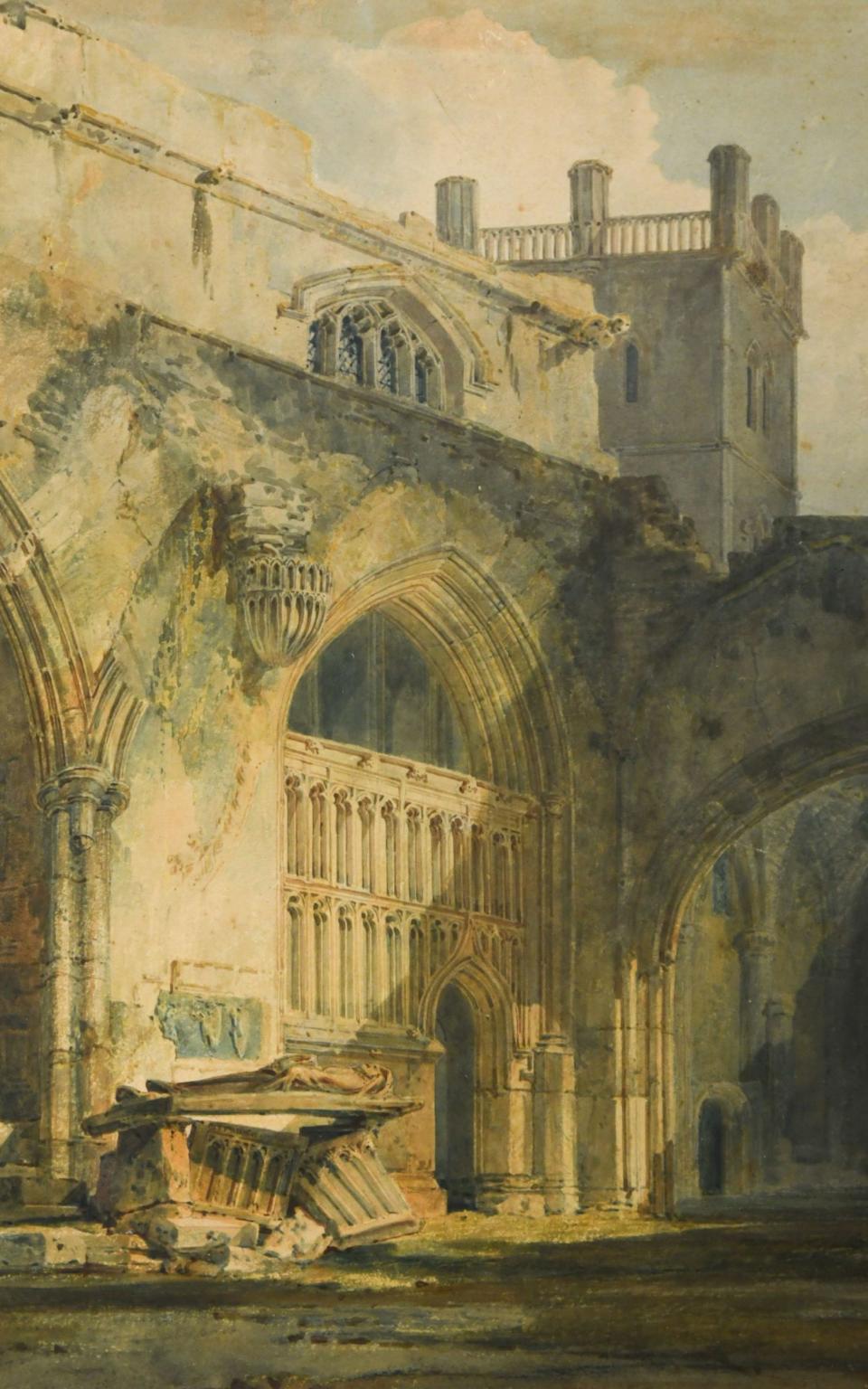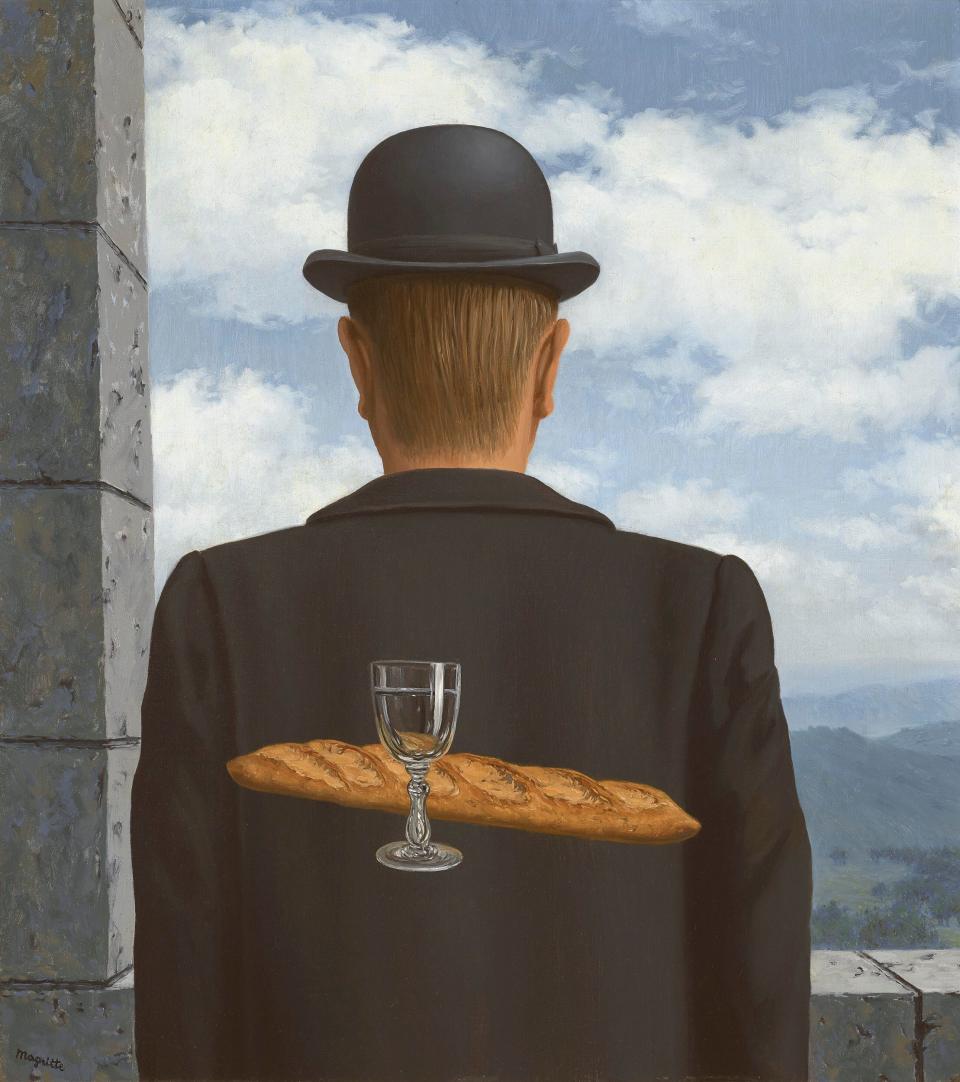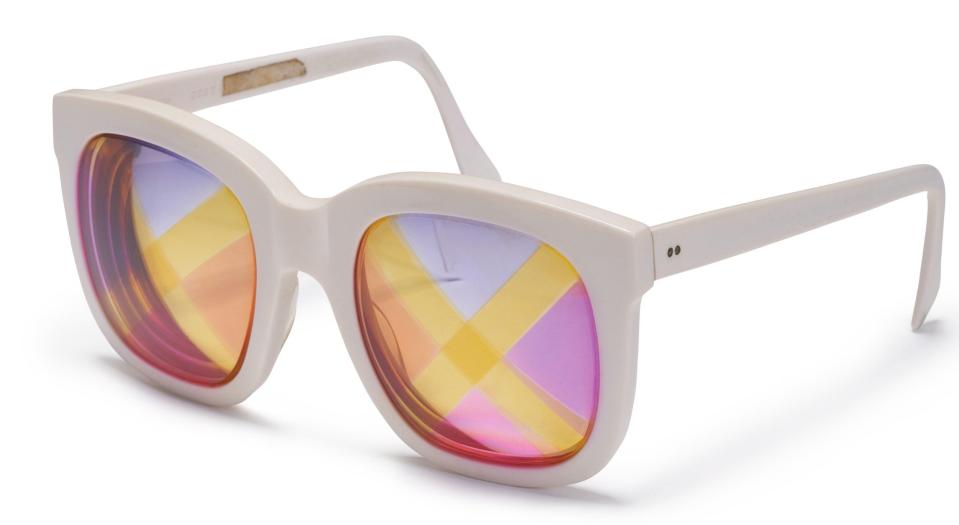A sleeper awakes: how a painting sold for £100 turned out to be a Turner

- Oops!Something went wrong.Please try again later.
How many people dream of finding a work by a great master in a clearance sale for next to nothing? The latest example to come to light is an atmospheric architectural watercolour of a slightly dilapidated ecclesiastical building that was part of a stack of pictures found in the clearance sale of a Georgian mansion in Suffolk at the start of the 1990s. The cost was a mere £100, but despite not knowing who the artist was, the buyer, who wishes to remain anonymous, liked it enough to hang it in their dining room for the next 30 years.
The only clue as to its authorship was the name W Turner that was inscribed on the reverse. The buyer occasionally entertained thoughts that this might conceivably be by the one and only Joseph Mallord William Turner, and eventually got round to checking through Tate’s Turner Bequest of thousands of paintings and sketches which the artist left to the nation when he died in 1851. There, in the South Wales Sketchbook, they discovered a similar but less developed drawing of a chapel attached to St Davids Cathedral in Pembrokeshire, made on a tour of Wales in 1795 when Turner was just 20 years old.
Turner had been exhibiting at the Royal Academy from the age of 15 and was much in demand, along with Thomas Girtin, making romantic topographical views and copies of more established artists. Many of his subjects were architectural, bearing the hallmarks of his training as an architectural draughtsman.
From 1791, he travelled around Britain on summer sketching tours, sometimes working his sketches up into finished works for clients. Of his Welsh trip in the summer of 1795, he noted in his sketchbook that he set off from Wells in Somerset, and visited Picton Castle just before St Davids. From Haverfordwest, Turner travelled “36 miles and back” and noted, with some disappointment, “no inn”. Turner designated all places with good inns along the way with an ‘x’ so he would know where he could stay.
So, could the clearance sale watercolour be a previously unrecorded work by Turner? A research trip to Pembrokeshire by the new owner was inconclusive as the chapel had undergone significant repair work since Turner’s visit, and because the painter had taken some artistic licence with the viewpoint. The owner approached local auctioneer Cheffins in Cambridge, which had, last March, sold a rediscovered early Welsh view of Chepstow Castle by Turner for £93,375 to Chepstow Museum. Turner’s early topographical works do not fetch as much as his later Swiss mountain views, which can fetch millions. But the best, most romantic early views, such as one of Caernarvon Castle in 1798, have sold for nearly £500,000.

As it did with Chepstow Castle, Cheffins called in Andrew Wilton, the first curator of the Clore Gallery for the Turner Collection at Tate Britain, who recognised it as a Turner and in perfect condition. He confirmed that it was a highly finished drawing by Turner that would have been worked up from his sketch back in his London studio after his return from Wales, and that the signature and location notes were in his own handwriting. The view, in fact, depicts with intricate detail and accuracy the entrance to a chapel built in 1509 for Bishop Edward Vaughan as his burial place.
Wilton concluded the painting was almost certainly produced as a commission for one of Turner’s patrons or friends and is the only known finished watercolour of this subject. Where it was for the couple of hundred years before its appearance in a Suffolk clearance sale, however, remains a mystery. Partly because of that and its early date, it has been estimated at a modest £20,000-£30,000 when it is auctioned by Cheffins on March 20. The painting also lacks the dramatic landscape setting that characterises his most sought-after work, because, as Wilton points out, the cathedral is set deep in a valley. The drama instead is extracted from the light and shade of the building itself.
Patricia Cross at Cheffins says: “This piece is a significant new discovery which provides a glimpse into Turner’s early development as an artist.” Having been completely missed last time it was for sale, it is also the perfect example of a “sleeper” that has finally awoken.
Could this Magritte help reverse London’s art market slump?

London’s major winter sales of Impressionist, Modern and Contemporary art at Christie’s, Sotheby’s and Phillips begin tomorrow – a week later than last year, allowing them more time to halt what looked like a downward slide for the London market.
Last year’s London’s winter sales were estimated at £355 million, 26 per cent down from 2022.
But the slide may have tailed off.
This year, the week’s sales are estimated to bring £321 million, down just 9.5 per cent from 2023.
The most improved saleroom promises to be Christie’s, which has bumped up estimated sales by 20 per cent from £159 million last year to £191 million, with the help of L’ami Intime, a £30-50 million René Magritte that belonged to the late publisher and conductor Gilbert Kaplan, who died in 2016, and his wife Lena.
The Kaplans bought it at auction in 1980 for close to £100,000, since when Magritte prices have soared.
Then at Christie’s there is a 1965 California swimming pool painting by David Hockney (£16 million), a 1963 Tangier landscape by Francis Bacon that once belonged to Roald Dahl and is being sold by the financier Pierre Lagrange (£15 million), and two Monets that could add £20 million to the total.
Sotheby’s, on the other hand, has nothing offered in the eight-figure bracket and present £110 million of art, down 32 per cent on last year, while Phillips’s estimates have fallen by 40.4 per cent to £20 million.
Elton John’s memorabilia surpasses expectations

Christie’s marathon sale of works from Elton John’s Atlanta apartment ended last week with a total of $20.5 million (£16.2 million), double the pre-sale expectations.
Demand was heaviest for memorabilia with no widely accepted price levels. His silver platform boots, for instance, surpassed their $5,000 estimate to sell for $94,500. A pair of rainbow-hued sunglasses, estimated at $2,000, sold for $22,680.
The artwork and photography, pots by Grayson Perry, and a Banksy, on the other hand, tended to sell closer to estimates, which were clearly based on precedent, suggesting that the pop-star provenance did not always add value substantially.
Sometimes estimates may have reflected the high prices he paid for things. For example, a Gilbert & George photographic work, Four Plants (1980), which cost him $186,000 in 2005, sold for just $189,000, within its estimate.

